|
Border Models' 1/35
scale
Junkers Ju 87G-1 / G-2
Stuka
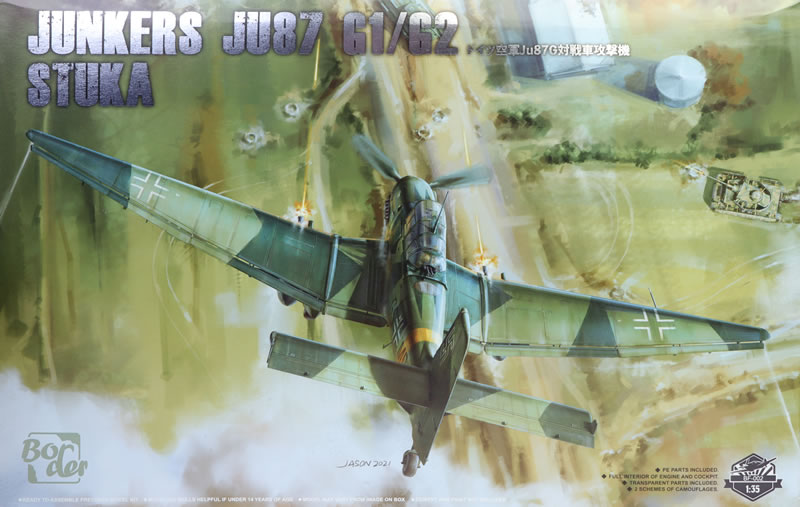
Reviewed by Brett Green
S
u m m a r y |
| Catalogue Number: |
Border Models Kit No. BF-002 - Junkers Ju 87G-1 / G-2 Stuka |
| Scale: |
1/35 |
| Contents and Media: |
239 parts in grey injection moulded
styrene; 16 parts in clear; 15 pieces in brass plated photo-etch; four resin parts (standing pilot figure); markings for
two aircraft |
| Price: |
£79.95 UK Price (£66.83 Export Price) plus postage available online from Hannants |
| Review Type: |
FirstLook |
| Advantages: |
Attractive and appropriate surface textures; relatively straightforward assembly; multi-part canopy may be posed open or closed; hollowed out guns and exhausts; includes full engine detail (if you like that kind of thing); poseable elevators; high quality resin standing pilot figure; no inserts; decals feature good colour and register; 1/35 scale will permit crossover with many military vehicle and figure subjects. |
| Disadvantages: |
Poorly shaped propeller blades; half-hearted cockpit; skinny photo-etched shoulder straps and no lap belts; no harness for rear gunner; instructions lack clarity and detail on optional parts; decals have a flat finish. |
| Recommendation: |
There's a lot to like about this 1/35 scale Stuka from Border Models. The chunky surface textures are particularly well done and quite appropriate for this hard working warhorse. However, there are also a number of baffling errors, omissions and half-hearted elements. Fortunately we are already seeing the first after market update sets that will improve the cockpit. What we really need, though, is a corrected 1/35 scale VS 111 propeller assembly, as the kit parts are very prominent and very wrong. |

The Junkers Ju 87 Stuka entered the Second World War with a fearsome reputation as a "terror bomber". Its ugly angular lines, screaming dive and capability for pinpoint precision bombing made the Stuka a terrifying icon of the early Blitzkrieg campaigns.
During the Battle of Britain, however, unescorted Stukas on long-range bombing missions were shot down almost at will by Spitfires and Hurricanes. The reputation of the Stuka was severely damaged.
Nevertheless, the Stuka continued to be used effectively in other theatres and roles until the last days of the war – troop support in North Africa, night bomber in Italy, and tank killer on the Eastern Front.
The Ju 87 G-1 / G-2 Kanonvogel
With the G variant, the ageing airframe of the Ju 87 found new life as an anti-tank aircraft. This was the final operational version of the Stuka, and was deployed on the Eastern Front.
Hans-Ulrich Rudel, a Stuka ace, had suggested using two 37 mm Flak 18 guns, each one in a self-contained under-wing gun pod, as the Bordkanone BK 3,7, after achieving success against Soviet tanks with the 20 mm MG 151/20 cannon. These gun pods were fitted to a Ju 87 D-1, W.Nr 2552. The first flight of the machine took place on 31 January 1943.

In April 1943, the first production Ju 87 G-1s were delivered to front line units. The two 37 mm (1.46 in) Bordkanone BK 3,7 cannons were mounted in under-wing gun pods, each loaded with two six-round magazines of armour-piercing tungsten carbide-cored ammunition. With these weapons, the Kanonenvogel ("cannon-bird"), as it was nicknamed, proved very successful in the hands of Stuka aces such as Rudel.
A handful of production Gs were committed in the Battle of Kursk. On the opening day of the offensive, Hans-Ulrich Rudel flew the only "official" Ju 87 G, although a significant number of Ju 87 D variants were fitted with the 37 mm (1.46 in) cannon, and operated as unofficial Ju 87 Gs before the battle
In June 1943, the RLM ordered 20 Ju 87 Gs as production variants.
The G-1 was converted from older D-series airframes, retaining the smaller wing, but without the dive brakes.
The G-2 was similar to the G-1 except for use of the extended wing of the D-5.
208 G-2s were built and at least a further 22 more were converted from D-3 airframes.*
1/35 has long been the default scale for military vehicle kits and figures.
The closest common aircraft scale is 1/32. You'd think that these two scales would be close enough to work together, but the difference really is noticeable.
Border Models has now closed this gap with two recent 1/35 scale aircraft model releases - a Messerschmitt Bf 109 G-6 and a Junkers Ju 87 G-1/G-2 Stuka. These offer a legitimate crossover between air and ground military subjects, allowing modellers to take advantage of an almost limitless number of vehicle and figure subjects to display with these new 1/35 scale aircraft kits. The possibilities are only limited by your imagination.
Tonight I will focus on the Stuka.
Border Models' 1/35 scale Junkers Ju 87 G-1/G-2 Stuka comprises 239 parts in grey injection moulded styrene, 16 parts in clear plastic,15 pieces in brass plated photo-etch, four resin parts for a standing pilot figure and markings for two aircraft.
Surface textures look great, with a combination of recessed panel lines, rivets and chunky fasteners matched with selected raised rivet heads and inspection panels. I think this is perfectly appropriate for this brutish and hard working warhorse.
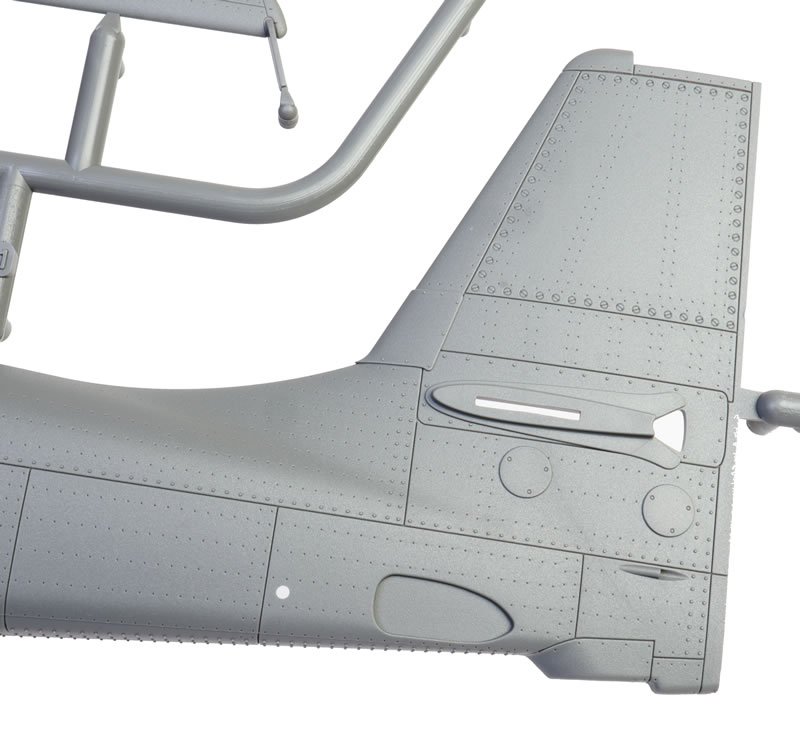
The cockpit scores a resounding "okay". All the main elements are there but most of the sidewall detail is moulded in place, the pilot's seat is simplified and suffers from thick sides and a big ejector pin circle, and the instrument panel could be better, with simple raised circles for bezels and no attempt at dial detail.
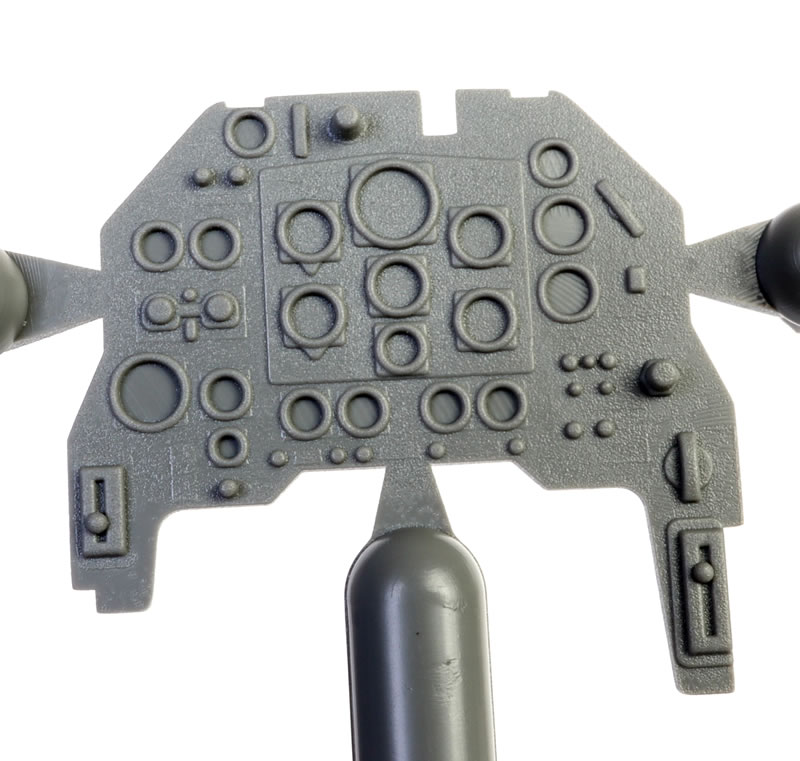
A decal is supplied to overlay the instrument panel. Red Fox Studios has already released a 3D printed instrument panel and cockpit detail upgrade, and I am sure we will see more from Eduard and others soon.
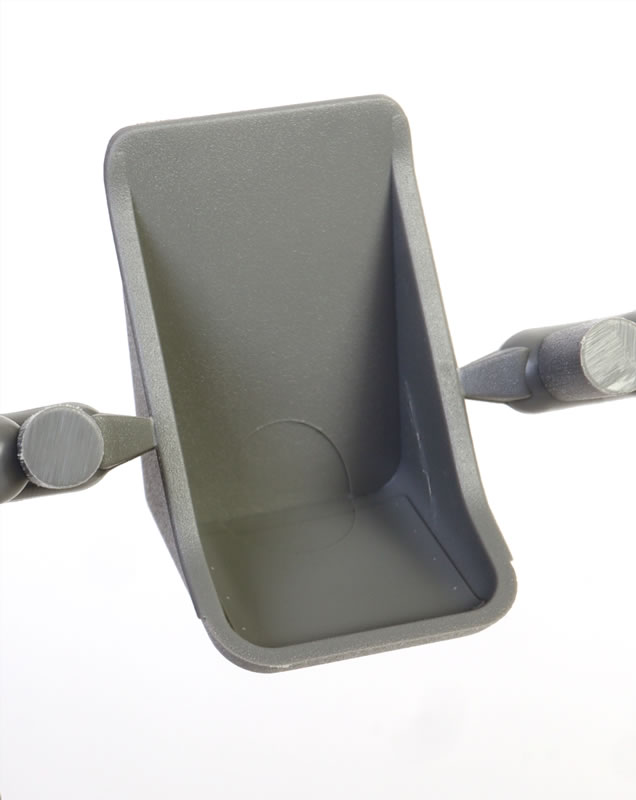
An undernourished and underdetailed pair of shoulder harnesses are included on the kit's photo-etched fret, but no lap straps at all, either for the pilot or the rear gunner.
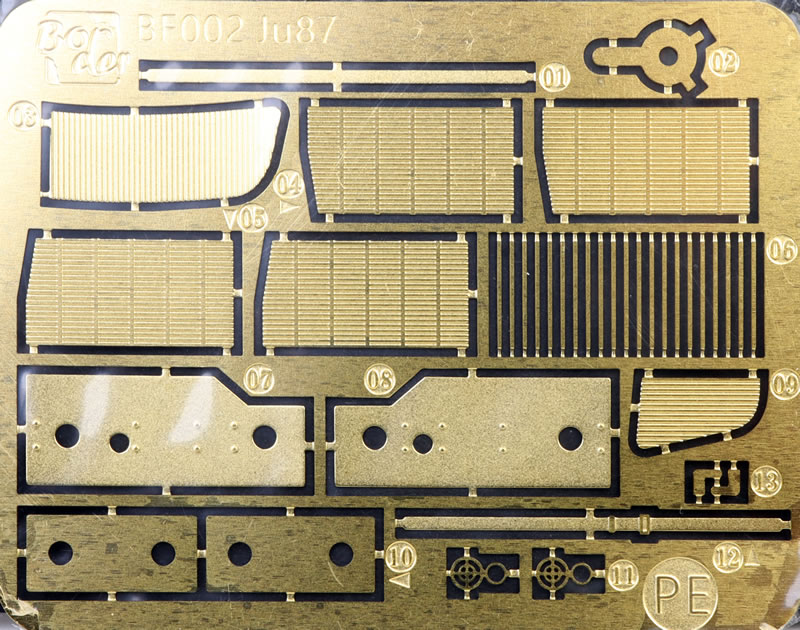
The rudder pedals are shrunken too.
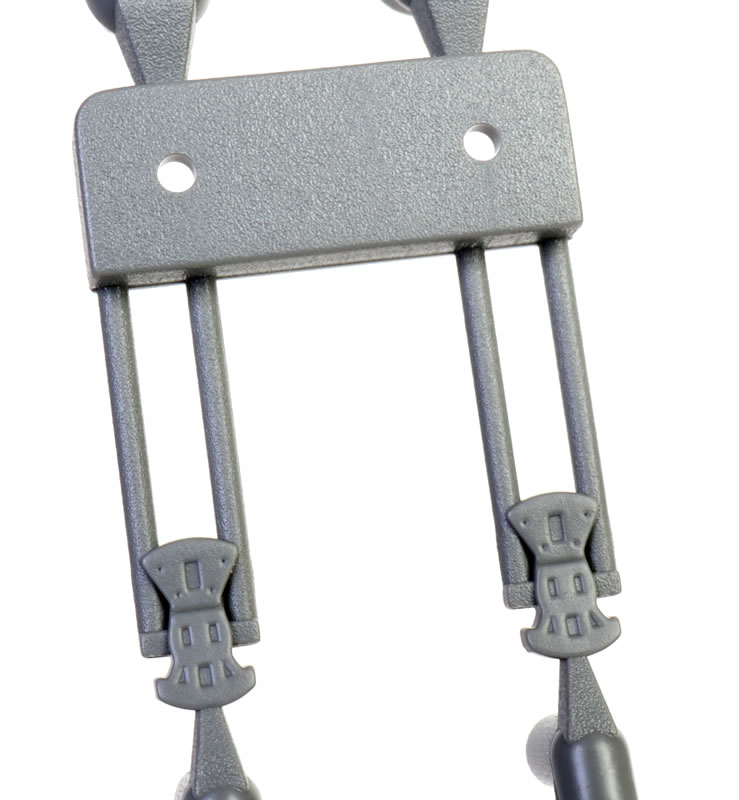
On the plus side though, the radio faces look really good and the MG 81Z machine gun barrels are hollowed out at the ends.
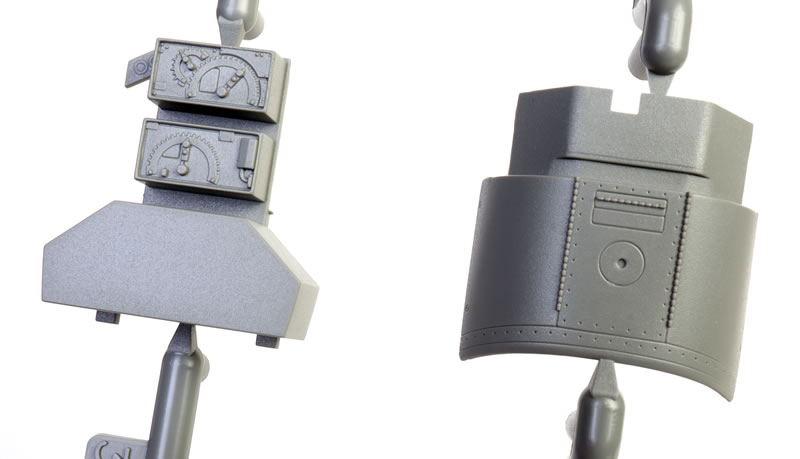
They also feature photo-etched ring and bead sights.
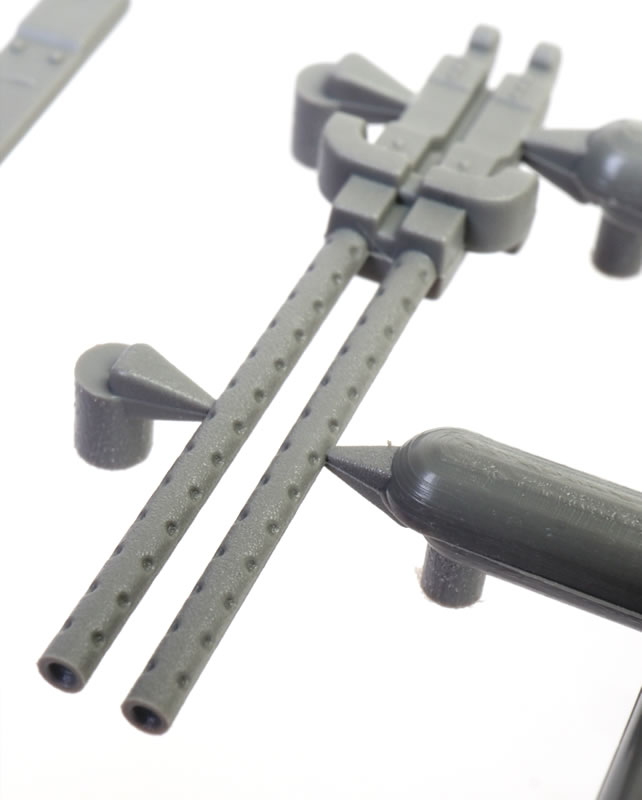
The Border Models kit offers a well detailed Junkers Jumo 211J engine which may be displayed by simply leaving the cowls off. The exhaust stubs are moulded onto a single strip for each side and the ends are hollowed out.
In my opinion, the worst aspect of the kit is the VS-111 propeller. The kit's blades do not bear the slightest resemblance to the real thing. There is not enough plastic on the blades to reshape them, so we can only hope that an after-market company releases a replacement soon.

Kit breakdown is conventional with fuselage halves and separate engine cowl halves (three main pieces for the cowl actually).

The wings are designed with a lower central section, lower outboard wing sections and overlapping upper wing halves. There is no wing spar but the design should ensure the correct gull-wing anhedral / dihedral.
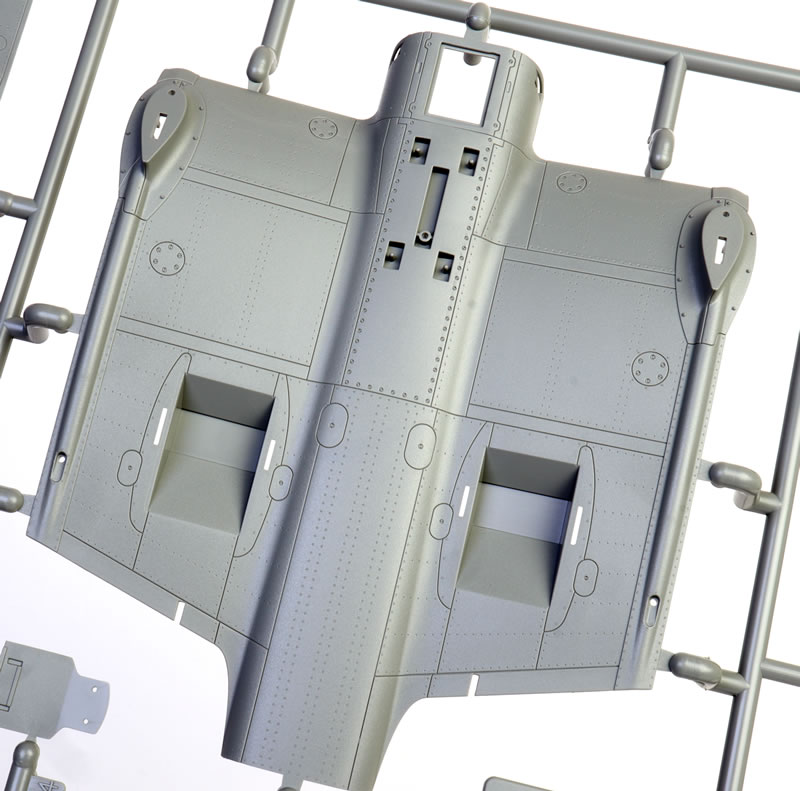
Photo-etched faces are supplied for the wing-mounted radiators.
The Stuka's distinctive flaps and ailerons are attached to the wings with separate actuators. Mass balances are separate parts too.
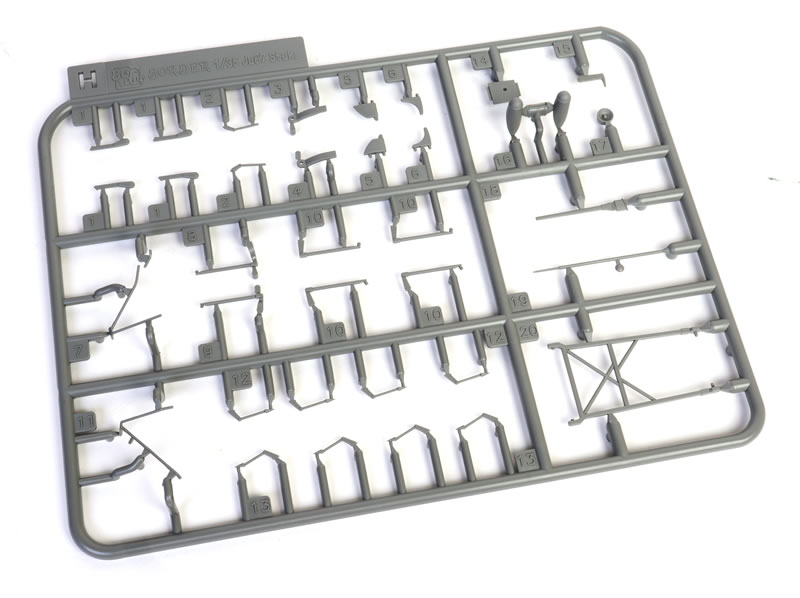
Elevators have tabs that will allow them to be posed neutral or dropped. You just cut off the pair of tabs that you don't want.
The 3.7cm gun pods are nicely detailed, including plumbing and mounts. The muzzles are hollow at the end, with the side perforations are recessed into the plastic.
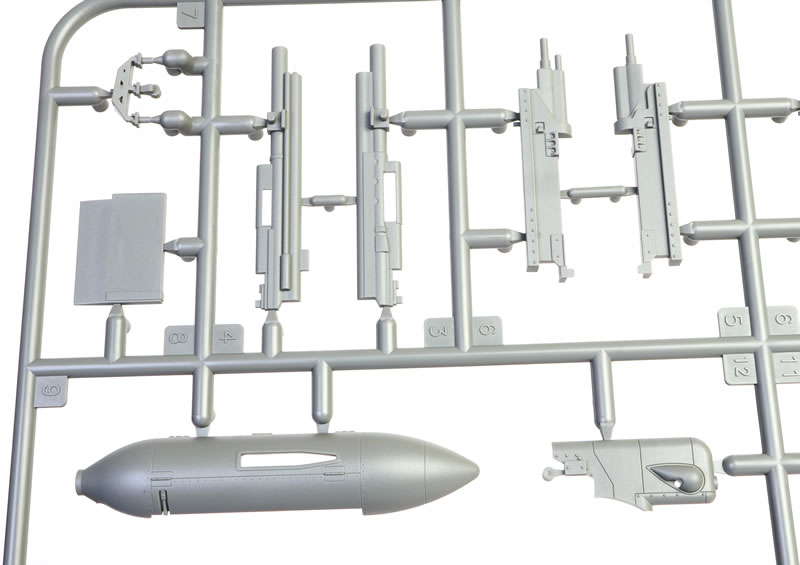
The undercarriage legs are full length and nicely detailed under the spats. It would be pretty simple to cut off the bottom halves of the spats if you wanted to display the legs. This modification was sometimes made in the field to prevent the buildup of mud from unmade airfields.
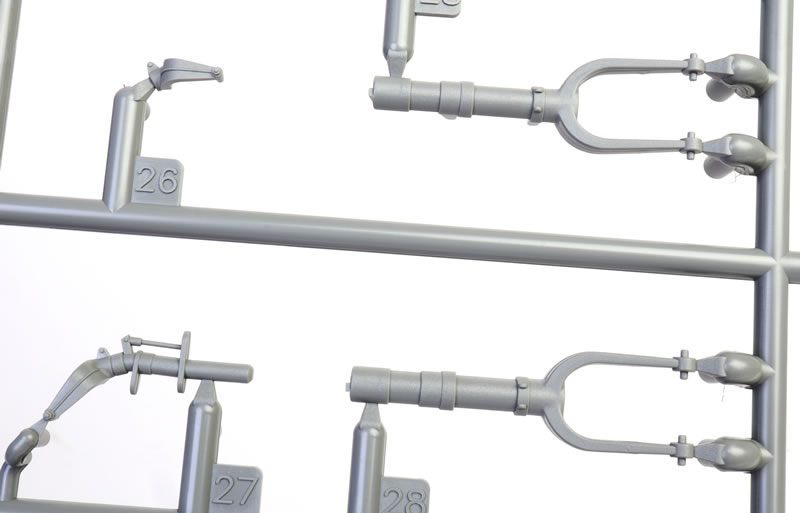
A centreline bomb and cradle are on the sprues, suggesting that we will see a Junkers Ju 87 D from Border Models in the future.
Both short and long wing tips are included, permitting the G-1 or G-2 variants to be built from the box.

Clear parts are thin and free from distortion.
Vertical frame lines are mostly raised on the inside, which is quite correct for
the Stuka. Masking and painting these might be a bit tricky. You might consider using strips of decal film instead.
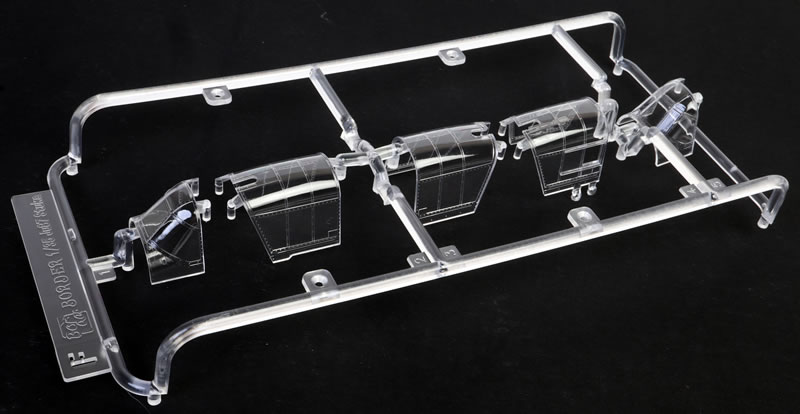
A number of optional clear parts are supplied, including two styles of windscreens and three rear canopy sections.
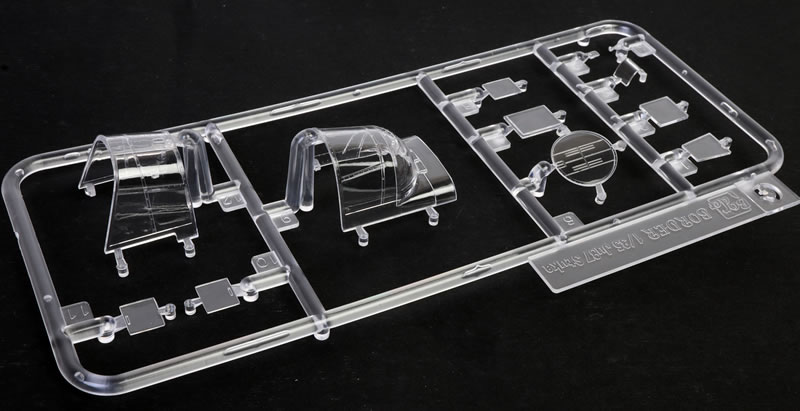
Unfortunately, there is no guidance as to which parts apply to what option.
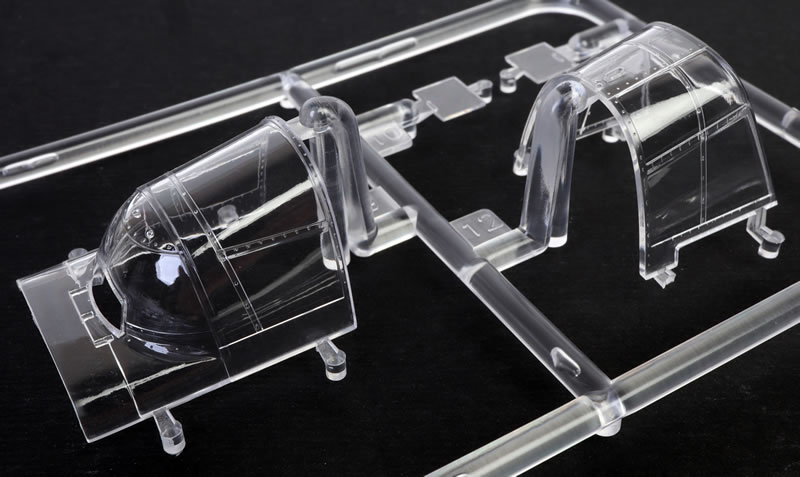
Optional armour plate is also offered for the outside of the pilot's cockpit.
The standing resin pilot figure is very well done and is a nice bonus.
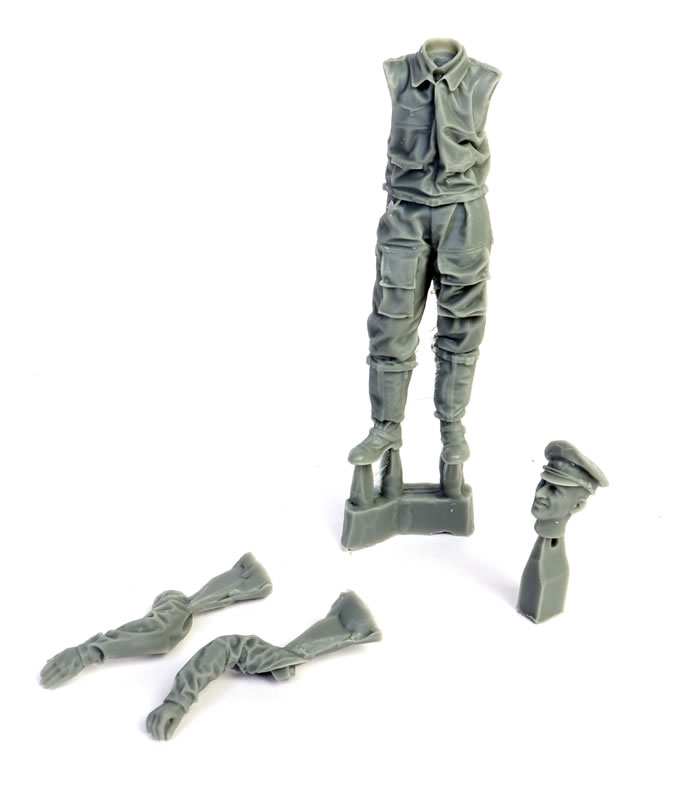
Even before cutting the first parts from the sprues, I found the instructions lacking in clarity and detail, especially with repect to optional parts. You're pretty much on your own there - check your references carefully.
Border vs. Hasegawa
Although they are different scales, comparisons between the Hasegawa 1/32 scale Ju 87 G-1/G-2 and the 1/35 scale Border Modes kits will be inevitable.
The Hasegwa kit is made up from 208 grey plastic parts while the Border Models kit has 239. Parts breakdown is similar.
Probably the biggest difference is that the Border Models kit has full engine detail and the Hasegawa kit does not. When the 40 or so parts of the engine are taken into account, the parts count of the Border Models kit is slightly lower than Hasegawa's.
Surface textures are more intricate and varied on the Border Models kit - I like it better than Hasegawa's, but Hasegawa's cockpit seat and instrument panel are better.
The shape of the Hasegawa VS-111 propeller blades is much better too, although they're not perfect either. Several after market replacements are available for the Hasegawa 1/32 scale kit.
Options are the same, with the choice of long or short wing tips for the G-1 and the G-2 variants. Marking options are the same for both brands, but Hasegawa offer decals for the inside canopy frames.
So apart from the different scales, the kits balance out pretty closely in the boxes with the Hasegawa kit winning on the shape of the prop blades and cockpit detail, and the Border Models kit offering full engine detail.
Markings
Markings are supplied for two aircraft - Rudel's <- +
-, and GS + MD.
The colours and registration are good. The decals themselves are flat in finish, which always makes me a bit nervous. Make sure you have a nice glossy finish on the model before you apply the decals.
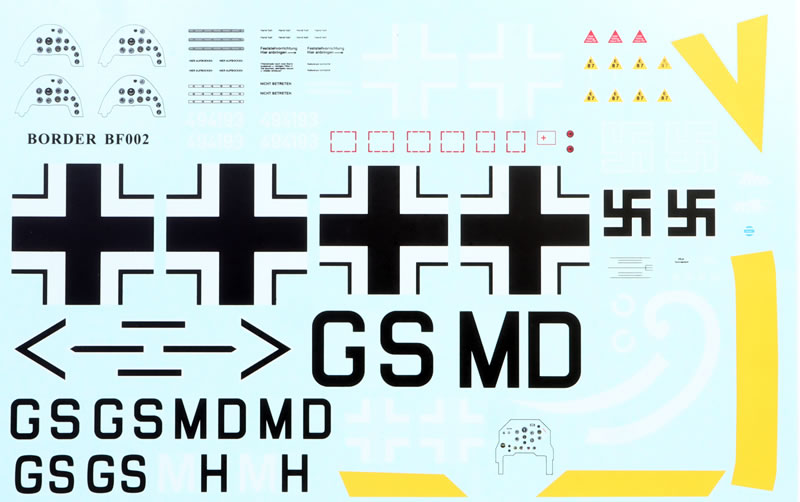
Both options are finished in bomber colours of RLM 70 Black Green; RLM 71 Dark Green and RLM 65 Light Blue.
Strangely, the decal sheet also includes four additional overlays for what looks like Messerschmitt Bf 109 instrument panels. Most peculiar...
There's a lot to like about this 1/35 scale Stuka from Border Models. The chunky surface textures are particularly well done and quite appropriate for this hard working warhorse,.
However, there are also a number of baffling errors, omissions and half-hearted elements.
Fortunately we are already seeing the first after market update sets that will improve the cockpit.
What we really need, though, is a corrected 1/35 scale VS 111 propeller assembly, as the kit parts are very prominent and very wrong.
Review kit purchased by the Editor
*Historical text adapted from Wikipedia
Review and Images Copyright © 2022 by
Brett Green
Page Created 11 July, 2022
Last updated 11 July, 2022
Back to HyperScale Main Page
Back to Reviews Page
|
Home | What's
New | Features
| Gallery |
Reviews | Reference
| Forum
| Search